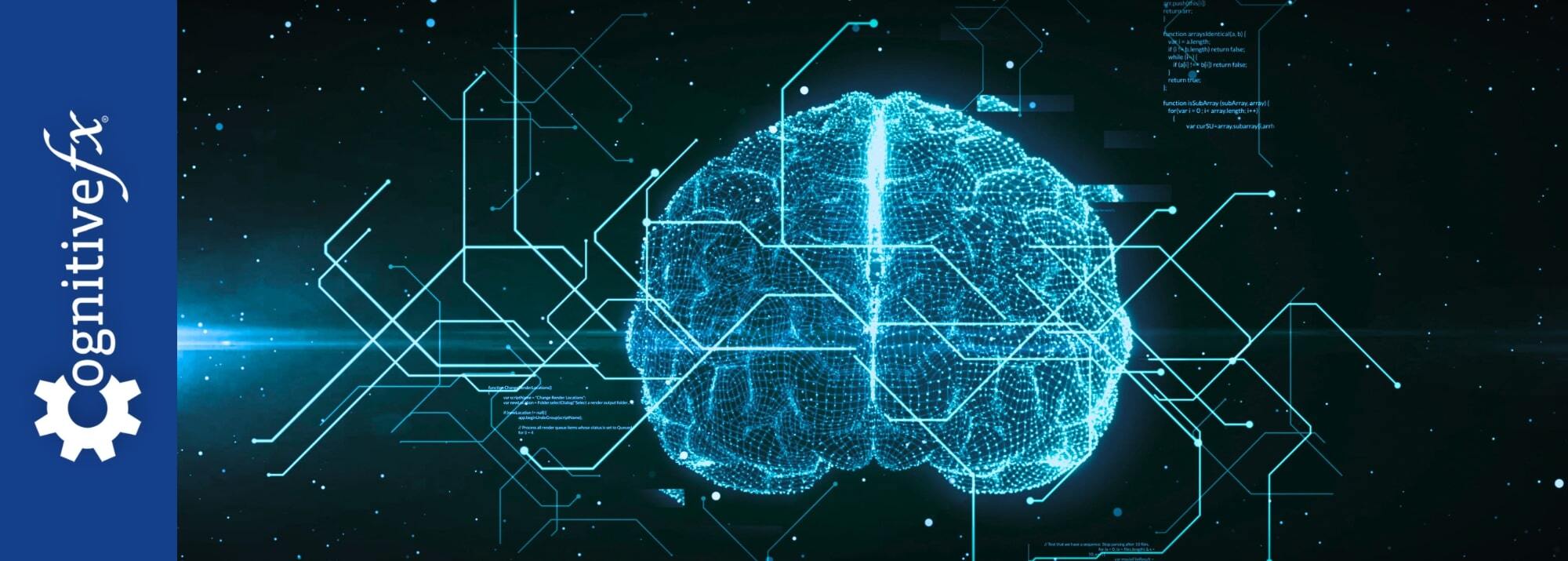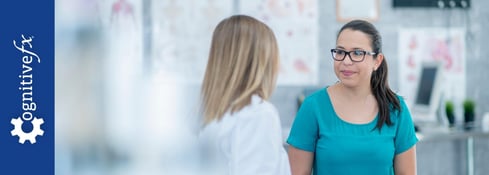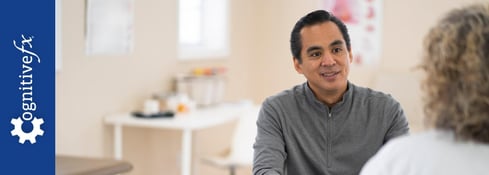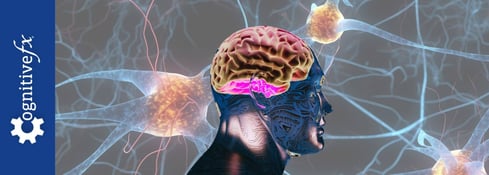TMS vs. tDCS for Depression: Which Is Better?
For many people living with major depression, antidepressant medications either don’t work or only get them part of the way to recovery. Symptoms may ease for a while, but then return, or never fully...


With the original form of TMS therapy for major depressive disorder—known as repetitive transcranial magnetic stimulation (rTMS)—some patients begin noticing improvements within the first week of treatment. However, this is uncommon. For most people, the benefits of TMS develop gradually over several weeks. Some patients don’t experience significant improvements until later in treatment—or even after it ends.
Recovery often unfolds in stages. Some patients first notice subtle shifts like improved sleep, slightly more energy, or greater emotional resilience. Over time, additional symptoms may ease. Others may feel mood changes sooner, but full remission in just a few sessions is rare.
These timelines can vary significantly from person to person—and newer, accelerated TMS protocols may lead to faster symptom relief for some patients. Accelerated TMS involves delivering the full course of treatment over a shorter time frame, and emerging research shows it can be just as effective—if not more so—for certain individuals.
If you’re not seeing immediate changes, it doesn’t mean the treatment isn’t working. Your brain simply may need more time to respond.
In this article, we’ll share what you can expect when starting TMS treatment, based on both current research and our clinical experience at Cognitive FX.
We’ll cover:
Our clinic, located in Provo, Utah, offers the most effective form of TMS—accelerated fMRI TMS—at a significantly lower price than other clinics offering equivalent treatments. Learn more about our approach here, or take our quiz to see if it's the right depression treatment option for you.
While each person’s response to TMS therapy is unique, the timeline below offers a general overview of what many patients experience:
Weeks 1 and 2 (5 to 10 sessions): In the early stages, a few patients notice small improvements—such as a slight lift in mood, increased energy, or feeling less reactive in situations that typically trigger depressive symptoms. TMS gradually stimulates nerve cells in the dorsolateral prefrontal cortex (DLPFC), the brain region linked to mood regulation. These early changes are subtle and may take time to build. Some patients experience mild headaches or a tapping sensation on the scalp, which usually fades over time. Serious side effects are rare.
Weeks 3 and 4 (15 to 20 sessions): More patients begin to notice changes by this point. Improvements might include better sleep, a renewed interest in social activities, or an increased ability to handle daily tasks. These changes are often modest but indicate that the treatment is starting to take effect. However, not everyone notices significant changes at this stage.
Weeks 5 and 6 (25 to 30 sessions): Toward the end of a standard rTMS course, roughly 50% of patients report substantial symptom relief, and about 30% reach full remission. Common improvements include better mood, higher energy, sharper thinking, and a greater capacity to manage everyday challenges—often leading to a noticeable boost in quality of life.
After Treatment: Many patients continue to feel better for months—or even years—without further treatment. For those who notice improvements only near the end of therapy, booster sessions may be recommended to reinforce progress and prevent relapse.
As a way to deliver results faster, researchers developed a new approach called accelerated TMS. Unlike traditional rTMS, which involves 37-minute sessions once a day, accelerated TMS uses much shorter sessions—allowing for multiple sessions per day.
This is made possible by a specific pulse pattern known as intermittent theta-burst stimulation (iTBS). iTBS delivers rapid bursts of three magnetic pulses (called triplets) every 10 seconds, mimicking natural brain wave patterns and efficiently stimulating the brain.
Using iTBS, a team at Stanford University created the most advanced accelerated protocol to date: SAINT™ treatment. SAINT combines iTBS with functional MRI and computer-guided neuronavigation to precisely locate the area of the brain targeted with TMS. The full protocol delivers 10 iTBS sessions per day over five consecutive days.
In practical terms, this compresses a standard 4 to 6-week TMS treatment into just one week, allowing patients to feel relief much sooner. At Cognitive FX, we use a protocol based on the SAINT approach (more on this below), and some of our patients begin noticing improvements after just a few days.
In general, completing your full course of treatment is advised for achieving the best results—even if improvements start early. Each session builds on the last, gradually strengthening the brain’s neural pathways to support lasting changes in mood and behavior.
With traditional TMS, this often meant committing to daily sessions over 4 to 6 weeks—a challenge for many patients to navigate amidst work and family obligations.
At Cognitive FX, we follow an accelerated protocol that delivers 10 iTBS sessions per day over just 5 days, for a total of 50 sessions. This condensed approach is not only highly effective, but also easier for most patients to fit into their schedules.
For some patients, there are exceptions, such as extreme cases of increased anxiety, where it can make sense to delay the rest of the treatment or end it early. This can be determined through discussion with your practitioner.
TMS is a gradual therapy, and most patients notice small, subtle changes at first. These early improvements may not feel dramatic; over time, they build into meaningful relief from depression and related symptoms.
At Cognitive FX, patients undergoing our accelerated protocol often describe the early stages of improvement as a “lightening” of their emotional burden. Here are some of the most common signs that TMS is starting to work:
Improved mood: One of the first changes many patients notice is feeling lighter, more hopeful, or more emotionally present. A renewed sense of humor, interest in hobbies, or enjoyment in social interactions may also return.
Increased energy: As treatment progresses, many patients feel less fatigued and more motivated. Daily tasks feel more manageable, and engaging in physical activity becomes easier.
Better sleep: TMS can help regulate sleep patterns. Patients often report falling asleep more easily, waking less at night, and feeling more rested in the morning.
Reduced anxiety: TMS may also ease anxiety symptoms. Many patients feel calmer and less overwhelmed, with fewer intrusive thoughts and a greater ability to manage daily stressors.
Increased cognitive function: Patients often experience better focus, memory, and problem-solving skills, which can translate into improved performance at work or school.
Improved relationships: As symptoms lift, communication and emotional connection improve. Many patients find it easier to re-engage with family and friends, strengthening their support systems.
Increased confidence and self-worth: As depression symptoms ease, patients often regain motivation, pursue goals more actively, and feel a renewed sense of self-worth and purpose.
Throughout treatment, your healthcare provider will likely assess your progress by tracking changes in your mood, energy, sleep, and daily functioning. You may be asked to rate your symptoms or reflect on how well you're engaging at work, home, or in social settings. These check-ins help monitor your response and guide any adjustments to your treatment plan.
While TMS is effective for many people, the speed and degree of symptom relief can vary based on individual factors—regardless of whether patients receive traditional or accelerated TMS. Some of the most important influences include:
Age: Younger patients tend to respond faster and more effectively than patients over 65, likely due to age-related changes in brain plasticity that reduce responsiveness to stimulation.
Personality and motivation: Patients who are persistent and highly motivated may see faster results. This may be partly due to their likelihood of completing the full treatment course, and possibly linked to brain traits associated with resilience and responsiveness to therapy.
Brain chemistry and connectivity: Each patient’s brain responds differently to TMS. Variations in how brain regions communicate can influence how quickly (and how well) a person responds to treatment.
Treatment-resistant depression: Individuals who haven’t responded to antidepressant medication or who have treatment-resistant depression may need more time to see results. However, studies show they can still benefit significantly from TMS.
Symptom severity: More severe depression or anxiety symptoms can delay noticeable improvements. This doesn’t mean TMS won’t work—just that it may take longer. In some cases, combining TMS with medication or psychotherapy can help. For example, one study found that adding psychostimulants (but not antidepressants) enhanced TMS outcomes as early as week two.
Co-occurring mental health conditions: Patients with additional conditions such as anxiety, post-traumatic stress disorder, or bipolar disorder may require a longer or more integrated treatment approach to achieve full symptom relief.
Complementary therapies: TMS is often more effective when paired with other treatments, including talk therapy, medication, or lifestyle changes. At Cognitive FX, for instance, all patients participate in cognitive behavioral therapy (CBT) sessions during their week of treatment to reinforce the benefits of TMS.
Lifestyle habits: Healthy routines—such as getting enough sleep, eating well, exercising regularly, and managing stress—can enhance the effects of TMS. In contrast, poor sleep, high stress, or substance use may slow progress.
Yes—for some patients, feeling worse in the early stages of TMS is a normal and temporary part of the process. This phenomenon, known as a “TMS dip,” affects roughly 20–25% of patients.
During treatment, TMS stimulates the dorsolateral prefrontal cortex (DLPFC), prompting the brain to reorganize and rewire neural pathways. In the short term, this adjustment period can lead to emotional discomfort or a temporary worsening of symptoms. While understandably discouraging, this reaction is typically a sign that your brain is responding to the treatment.
Importantly, a TMS dip does not mean the therapy isn’t working or that your depression is untreatable. In most cases, these symptoms resolve as the brain continues to adapt, and patients go on to experience meaningful improvements.
If you're experiencing a dip, it's essential to speak with your care team. They can monitor your response, offer strategies for managing symptoms, and adjust your treatment plan if needed. Continuing through this phase is often the key to long-term success.
The number of sessions needed can vary significantly depending on the TMS protocol patients receive.
Repetitive TMS (rTMS): A typical rTMS treatment involves 5 sessions per week administered over 4 to 6 weeks, for a total of 20 to 30 sessions. The exact number of sessions for each patient depends on how fast they experience improvements: 20 sessions may be enough for some patients, while others need a few extra sessions. Patients can continue with maintenance sessions after the initial treatment to help sustain the benefits. These additional procedures may be reduced to 1-2 times a week, depending on individual needs.
Deep TMS (dTMS): Deep TMS differs from traditional rTMS due to a distinct coil design, allowing the magnetic pulses to reach deeper parts of the brain (we’ve written in more detail about deep TMS here). Deep TMS treatments typically last 12 weeks and include two phases: acute and continuation. The first stage involves 20 sessions over 4 weeks, similar in structure to rTMS. The second phase consists of 2 sessions per week for an additional 8 weeks. In total, this adds up to 36 sessions. While some patients begin to feel better within the first few weeks, the full 12-week protocol generally delivers the most consistent and lasting results.
Accelerated TMS: As described earlier, the main advantage of accelerated TMS is that sessions are completed in a fraction of the time (3 to 10 minute sessions, depending on the protocol) and patients can receive multiple sessions per day. The SAINT™ protocol involves an intense course of 10 sessions daily for 5 days, for a total of 50 sessions. This condensed protocol makes accelerated TMS more convenient for many patients.
|
|
|
|
|
|
|
|
|
|
|
|
|
|
|
|
12 |
|
|
|
|
|
|
|
A common question patients ask is how long the effects of TMS will last after treatment ends. The answer varies—but for many, the effects can be long-lasting.
For patients who achieve remission during treatment, symptom relief can last months or even years. One study found that 62% of patients who reached remission with rTMS remained symptom-free a year later.
While long-term data on newer forms of TMS—like accelerated TMS—is still emerging, early evidence suggests that combining iTBS with tools like fMRI and neuronavigation (as we do at Cognitive FX) may lead to even more durable results by precisely targeting the most relevant brain areas.
That said, some patients do experience a gradual return of symptoms over time. In these cases, booster or maintenance sessions can help maintain the benefits. Encouragingly, research shows that patients who respond well to an initial round of TMS often respond again to follow-up treatments.
This is especially true for individuals with treatment-resistant depression (TRD). Studies show that completing a full TMS course—followed by ongoing maintenance sessions—significantly reduces the risk of relapse compared to stopping treatment altogether.
Maintenance TMS is typically delivered once or twice a week; for many patients, it’s an effective way to stay symptom-free long-term.
Our clinic, Cognitive FX, based in Provo, Utah, is one of the first clinics in the US to offer accelerated fMRI-guided TMS for treatment-resistant depression. Our treatment involves 10 short TMS sessions a day for 5 days—a total of 50 sessions.
This alternative to SAINT™ boasts the same precision of personalized targeting, combined with FDA-approved theta burst stimulation at a significantly lower cost (see below).
In a double-blind randomized controlled clinical trial, nearly 86% of patients receiving SAINT™ treatment responded, and about 79% went into full remission, even though all of them had previously tried and failed other treatments. One month later, 60% were still in remission. If symptoms return, SAINT can be repeated. In fact, 9 out of 10 patients who relapsed after their first round of SAINT went into remission again after a second round.
The only difference between our treatment and SAINT™ (a trademark licensed to Stanford Medical) is our targeting method. Our target locations are determined by fMRI and our prescribing neuroscientist and physician, rather than their proprietary software. Our team uses advanced post-processing of each patient’s brain to identify the ideal target site based on functional connectivity patterns. While the methodology differs slightly, the end result—precision targeting of the DLPFC using fMRI—is functionally the same.
Cognitive FX has been providing clinical fMRI scans for over 10 years and has developed many of the tools needed to process scans in-house. This allows us to provide personalized targeting at a lower cost.
| Accelerated fMRI - TMS | Magnus SAINT™ TMS | |
|---|---|---|
| FDA-Approved iTBS | ✔ | ✔ |
| FDA-Approved Neuronavigators | ✔ | ✔ |
| FDA-Approved Figure 8 Coils | ✔ | ✔ |
| Number of Treatment Days | 5 | 5 |
| Treatments per Day | 10 | 10 |
| Total Treatments | 50 | 50 |
| Number of TMS Pulses | Approx. 90,000 | 90,000 |
| Resting motor threshold pulse intensity | 90–120% | 90–120% |
| FDA-Approved Personalized DLPFC Targeting | ✘ | ✔ |
| Personalized DLPFC Targeting Assists Doctor in Target Location | ✔ | ✘ |
| Personalized E Field Coil orientation | ✔ | ✘ |
| Cost | $9,000 to $12,000 | $30,000+ |
Our fMRI-guided protocol of iTBS is:
Safe: Widely tolerated and associated with mild, short-lasting side effects.
Precise: fMRI ensures that the treatment target area is precisely located for each patient, accounting for variations in head size and shape. Neuronavigation ensures the magnetic coil is placed over that exact spot for every treatment session.
Fast: Treatment courses are reduced to a single week, making it easier to complete alongside life and work commitments (compared to 4 to 6 weeks of standard TMS and accelerated TMS protocols).
Effective: Precision coil placement combined with theta burst stimulation produces the best TMS treatment results to date.
To improve outcomes for our patients, we also include cognitive behavioral therapy (CBT) as part of our treatment. When combined with the traditional TMS (rTMS) method, CBT improved response and remission rates by ~8% and ~19%, respectively. Additionally, CBT is likely to produce sustained improvement over time once treatment has concluded.
Our outpatient, non-invasive treatment is ideal for most patients with major depression or treatment-resistant depression, but we have specific eligibility criteria for safety:
Learn more about our approach here, or take our quiz to see if you’re a good fit for receiving accelerated fMRI TMS therapy at Cognitive FX.

Dr. Mark D. Allen holds a Ph.D. in Cognitive Science from Johns Hopkins University and received post-doctoral training in Cognitive Neuroscience and Functional Neuroimaging at the University of Washington. As a co-founder of Cognitive Fx, he played a pivotal role in establishing the unique and exceptional treatment approach. Dr. Allen is renowned for his pioneering work in adapting fMRI for clinical use. His contributions encompass neuroimaging biomarkers development for post-concussion diagnosis and innovative research into the pathophysiology of chronic post-concussion symptoms. He's conducted over 10,000 individualized fMRI patient assessments and crafted a high-intensity interval training program for neuronal and cerebrovascular recovery. Dr. Allen has also co-engineered a machine learning-based neuroanatomical discovery tool and advanced fMRI analysis techniques, ensuring more reliable analysis for concussion patients.

For many people living with major depression, antidepressant medications either don’t work or only get them part of the way to recovery. Symptoms may ease for a while, but then return, or never fully...

A major challenge for patients with depression is that traditional antidepressant medications often take weeks or months to show results — if they work at all. This delay can be especially...

Both Transcranial Magnetic Stimulation (TMS) and Vagus Nerve Stimulation (VNS) are FDA-approved neuromodulation treatments for depression. At first glance, they may seem similar—both use electricity...

If you’re considering Transcranial Magnetic Stimulation (TMS) — a procedure that uses electromagnetic pulses to improve depression symptoms — you may be wondering what the treatment actually feels...

While many people are learning about Transcranial Magnetic Stimulation (TMS) for the first time, this brain stimulation method has been helping patients for nearly 40 years. Originally developed as...

Transcranial magnetic stimulation (TMS) has been FDA-approved for treating major depressive disorder (MDD) since 2008 and is a well-established treatment option, especially for patients who haven’t...